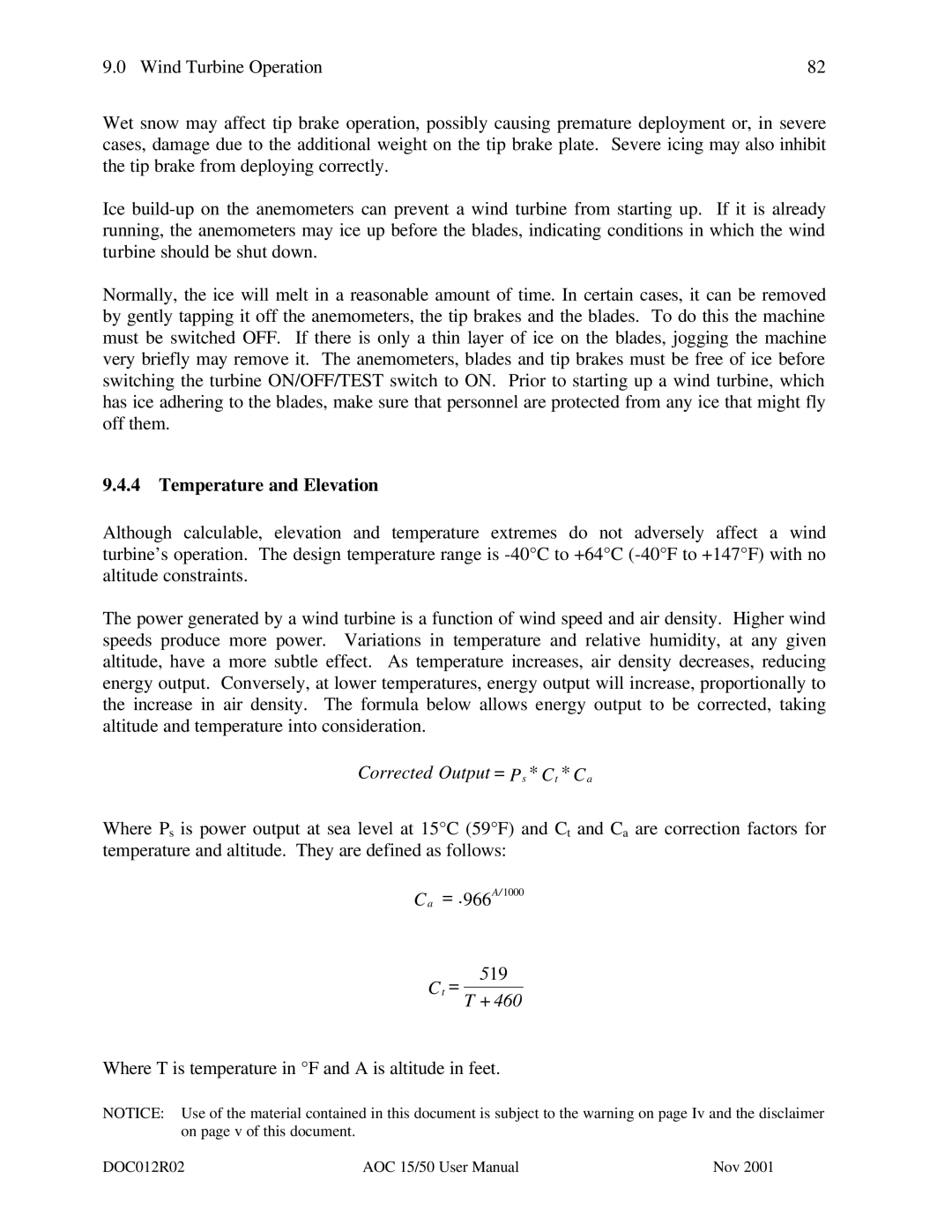9.0 Wind Turbine Operation | 82 |
Wet snow may affect tip brake operation, possibly causing premature deployment or, in severe cases, damage due to the additional weight on the tip brake plate. Severe icing may also inhibit the tip brake from deploying correctly.
Ice
Normally, the ice will melt in a reasonable amount of time. In certain cases, it can be removed by gently tapping it off the anemometers, the tip brakes and the blades. To do this the machine must be switched OFF. If there is only a thin layer of ice on the blades, jogging the machine very briefly may remove it. The anemometers, blades and tip brakes must be free of ice before switching the turbine ON/OFF/TEST switch to ON. Prior to starting up a wind turbine, which has ice adhering to the blades, make sure that personnel are protected from any ice that might fly off them.
9.4.4 Temperature and Elevation
Although calculable, elevation and temperature extremes do not adversely affect a wind turbine’s operation. The design temperature range is
The power generated by a wind turbine is a function of wind speed and air density. Higher wind speeds produce more power. Variations in temperature and relative humidity, at any given altitude, have a more subtle effect. As temperature increases, air density decreases, reducing energy output. Conversely, at lower temperatures, energy output will increase, proportionally to the increase in air density. The formula below allows energy output to be corrected, taking altitude and temperature into consideration.
Corrected Output = Ps * Ct * Ca
Where Ps is power output at sea level at 15°C (59°F) and Ct and Ca are correction factors for temperature and altitude. They are defined as follows:
Ca = .966A/ 1000
Ct =
519
T + 460
Where T is temperature in °F and A is altitude in feet.
NOTICE: Use of the material contained in this document is subject to the warning on page Iv and the disclaimer on page v of this document.
DOC012R02 | AOC 15/50 User Manual | Nov 2001 |
